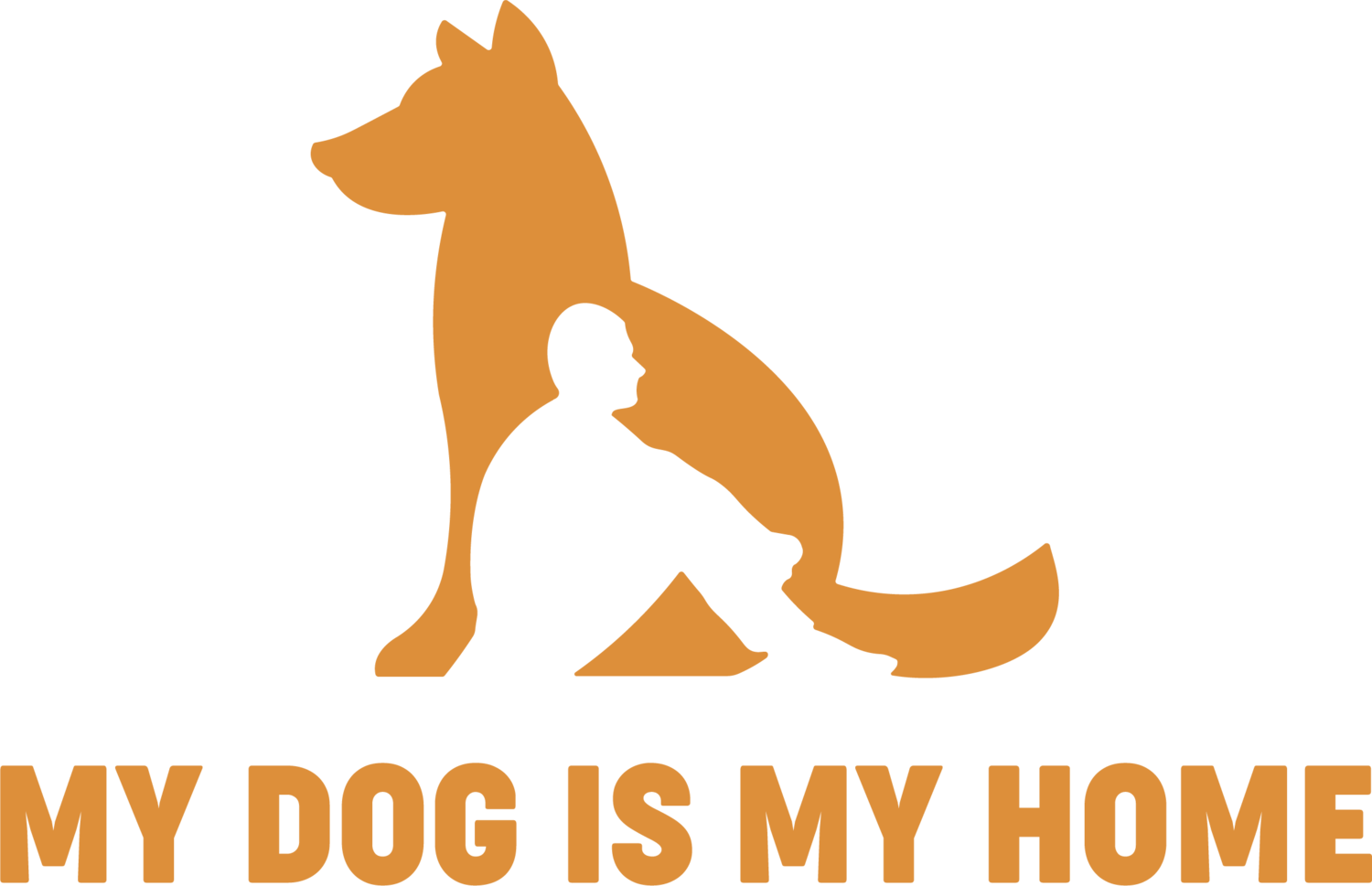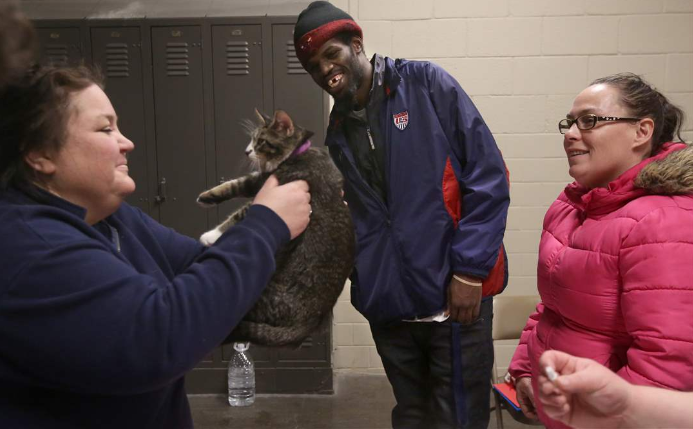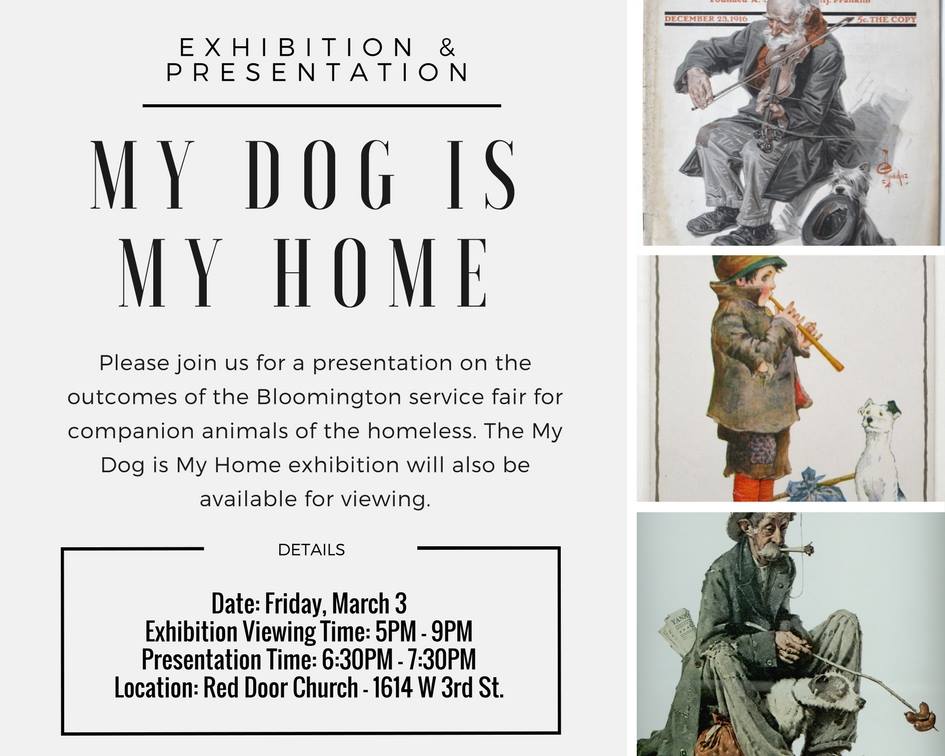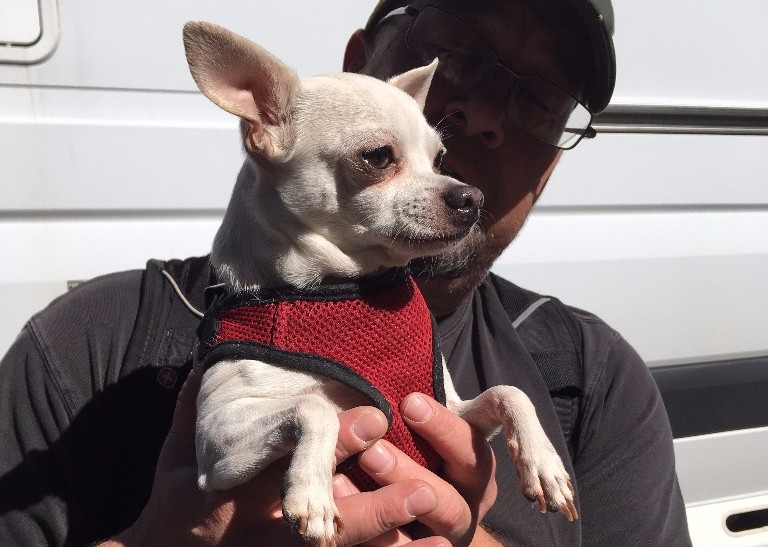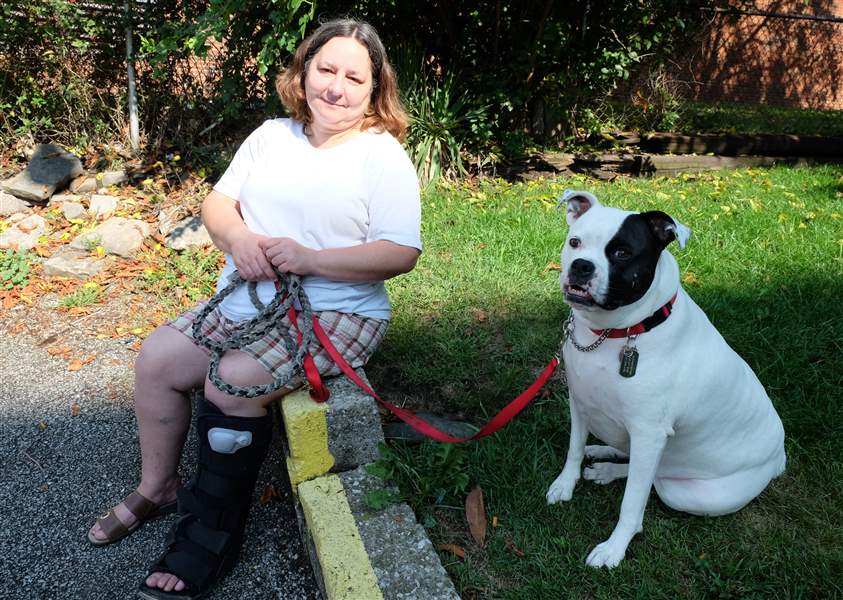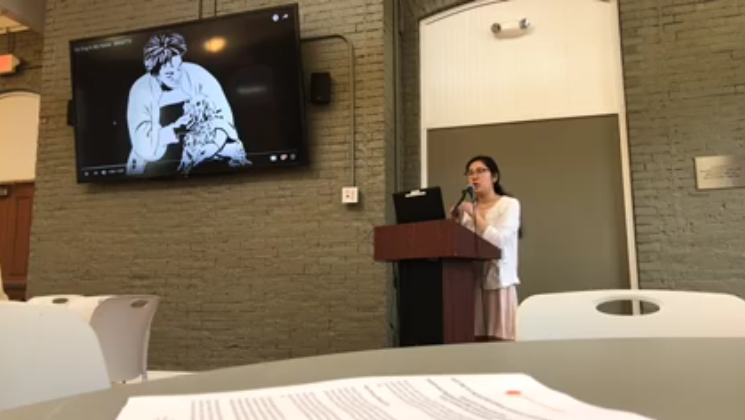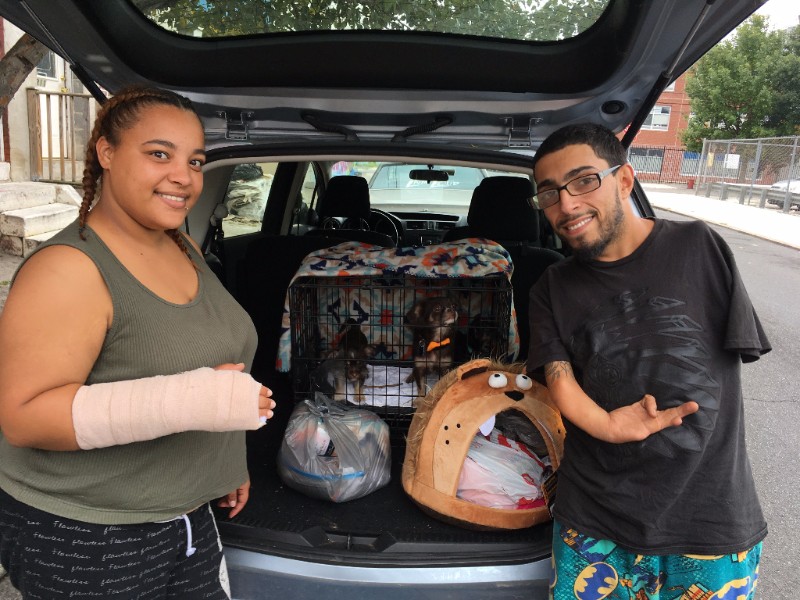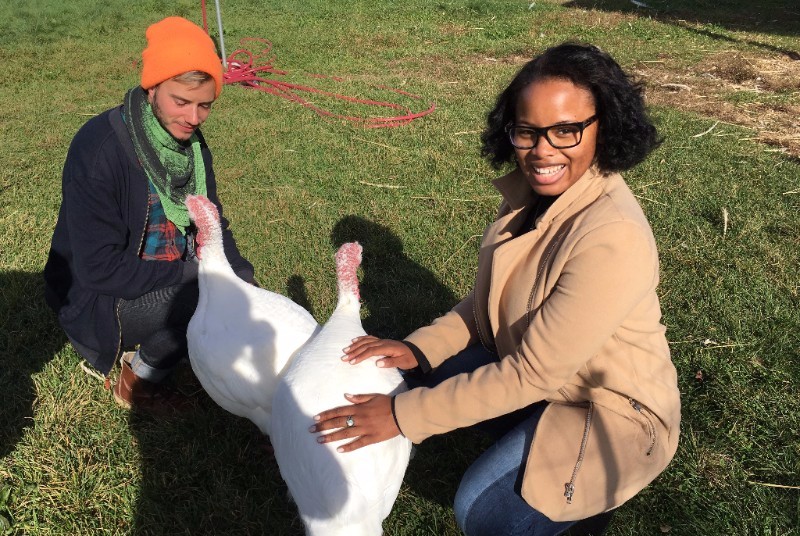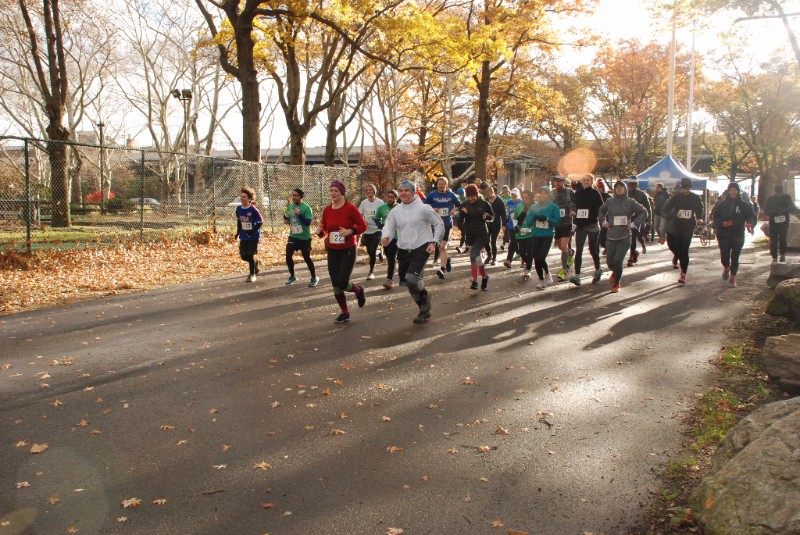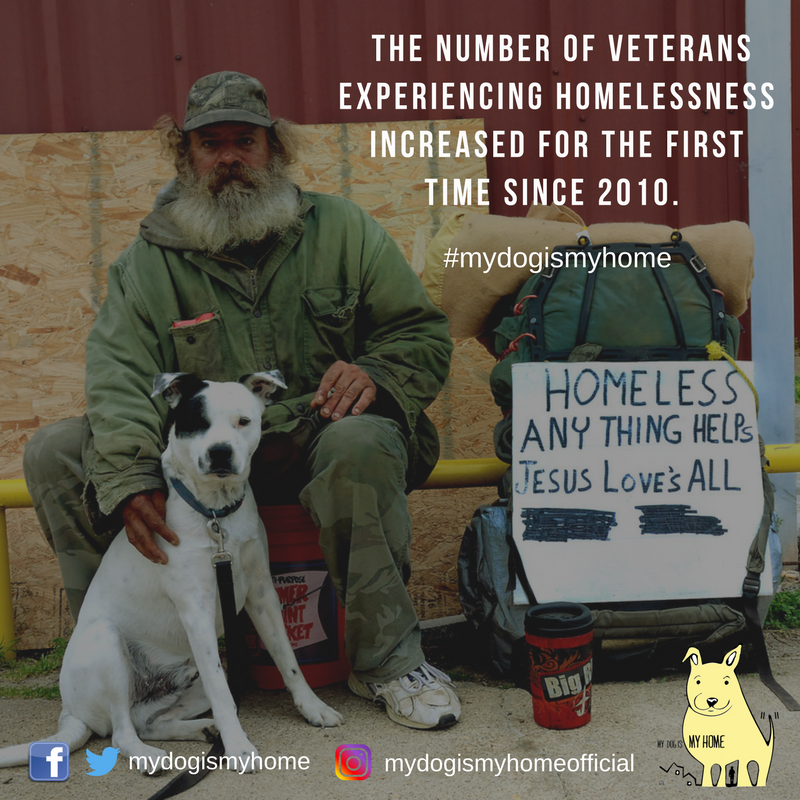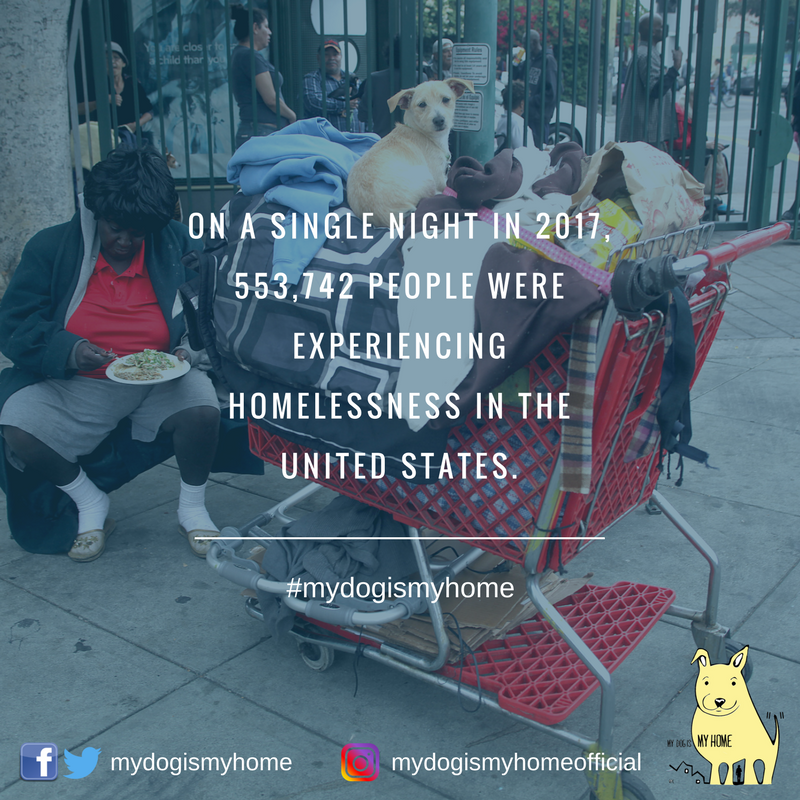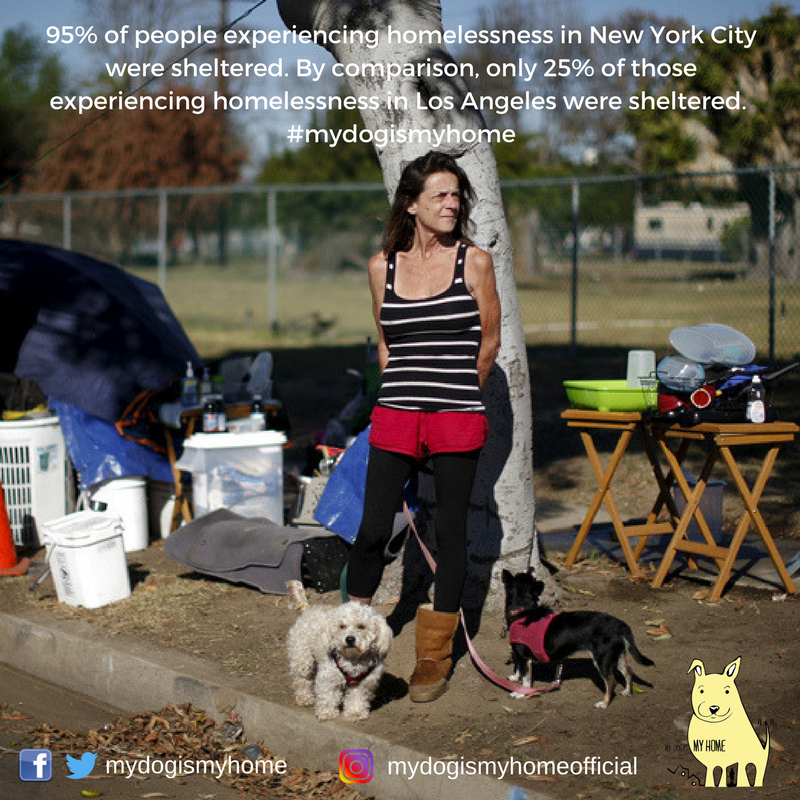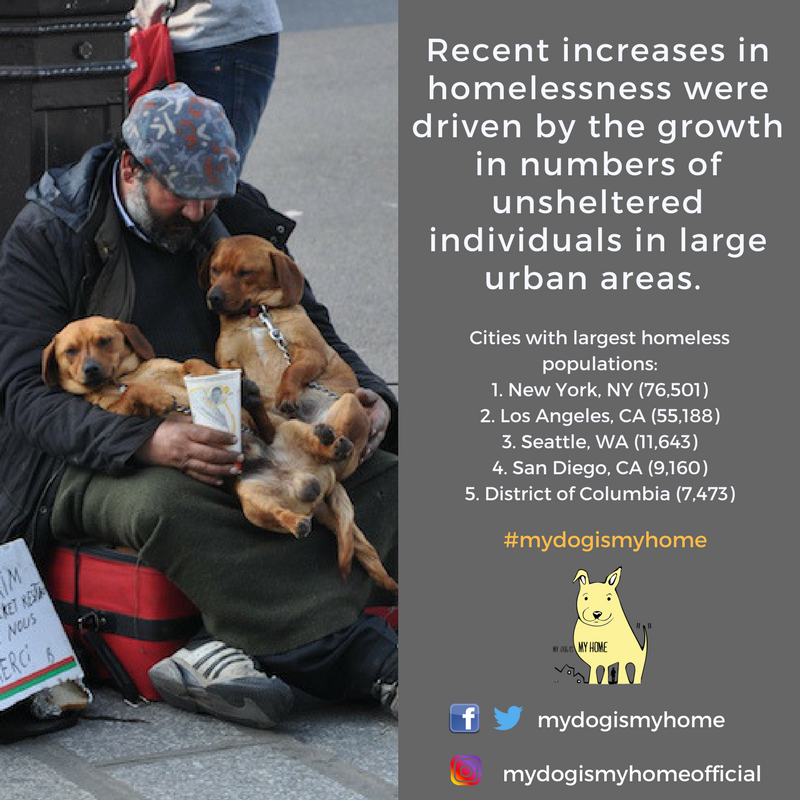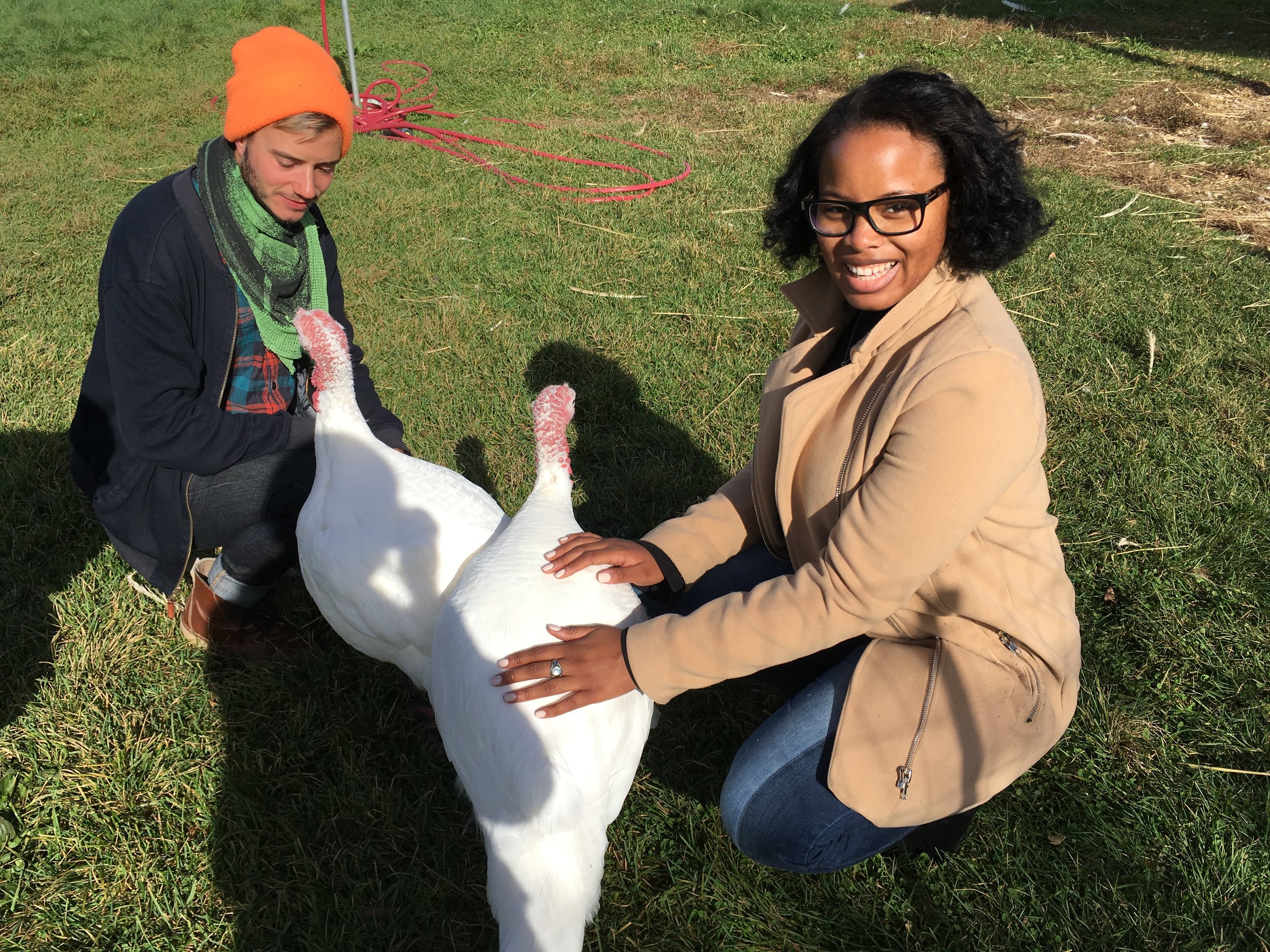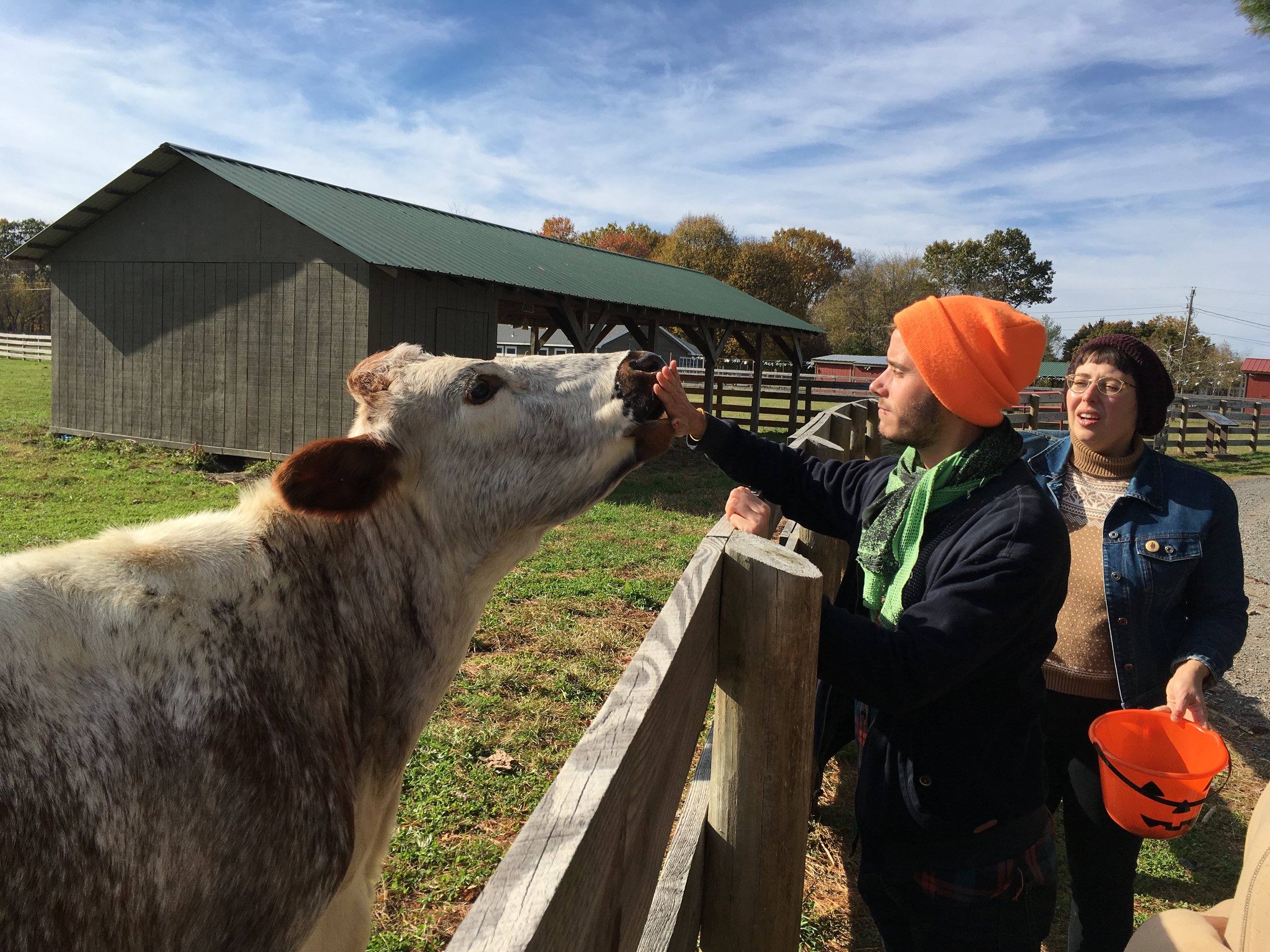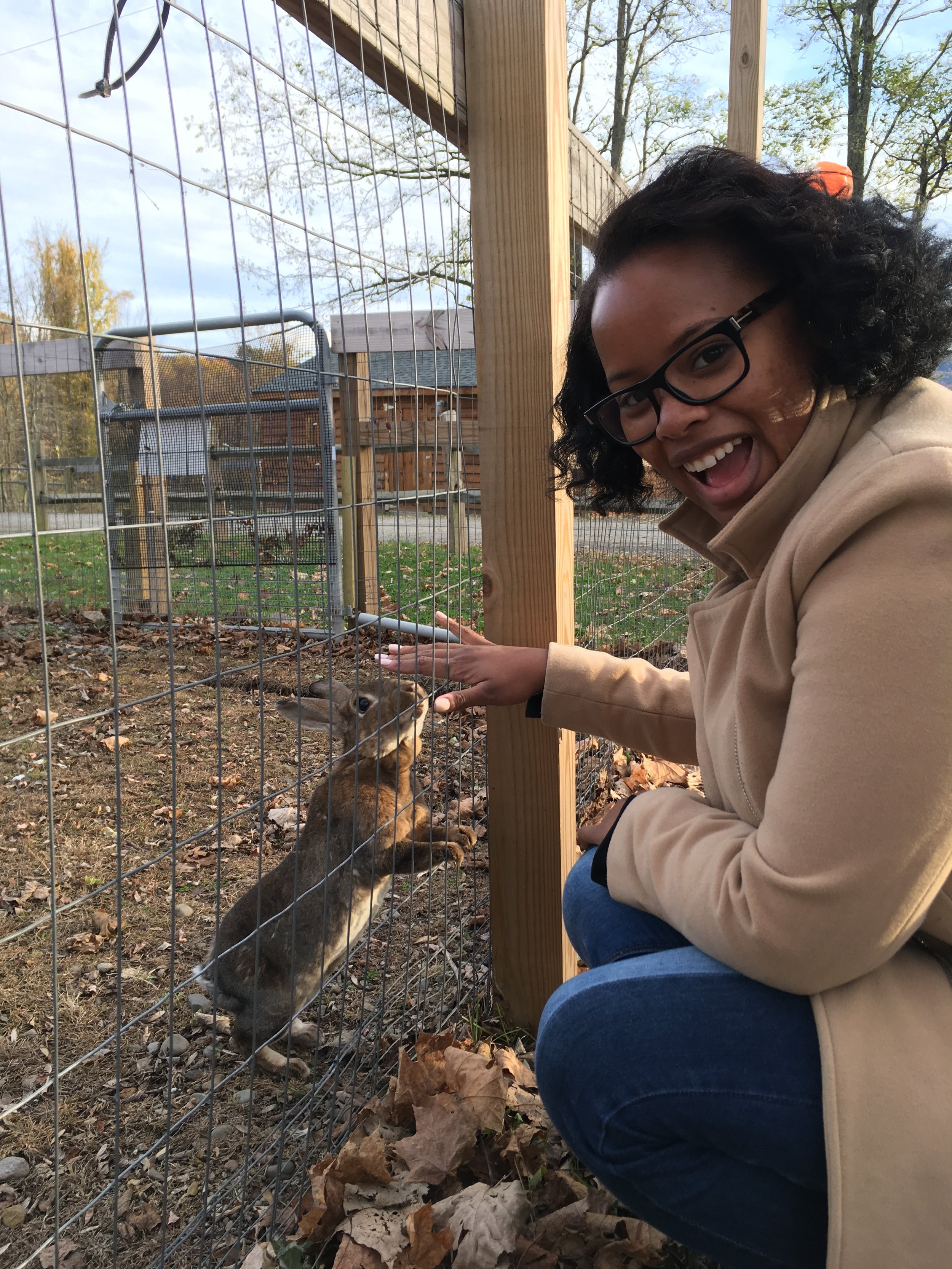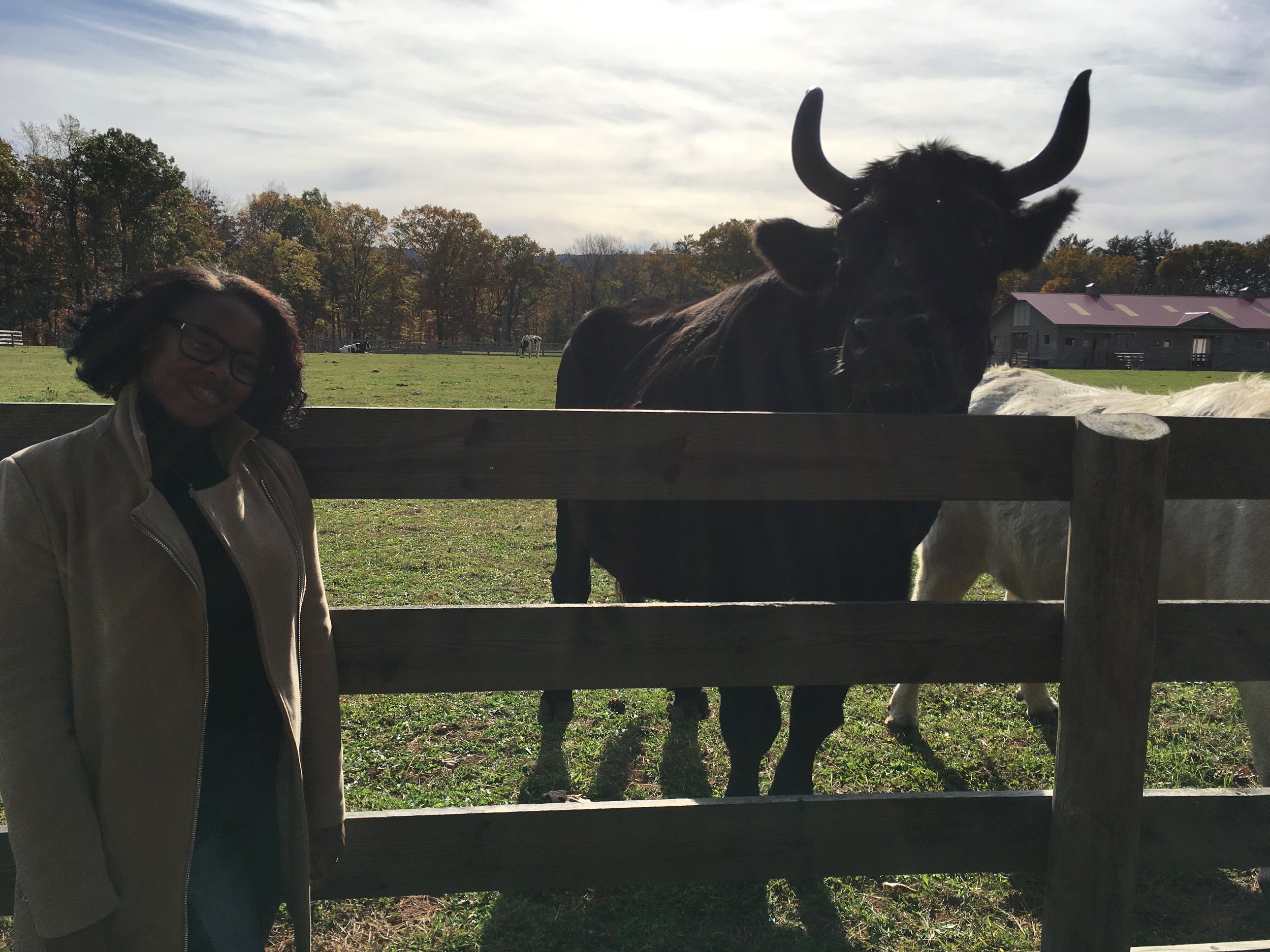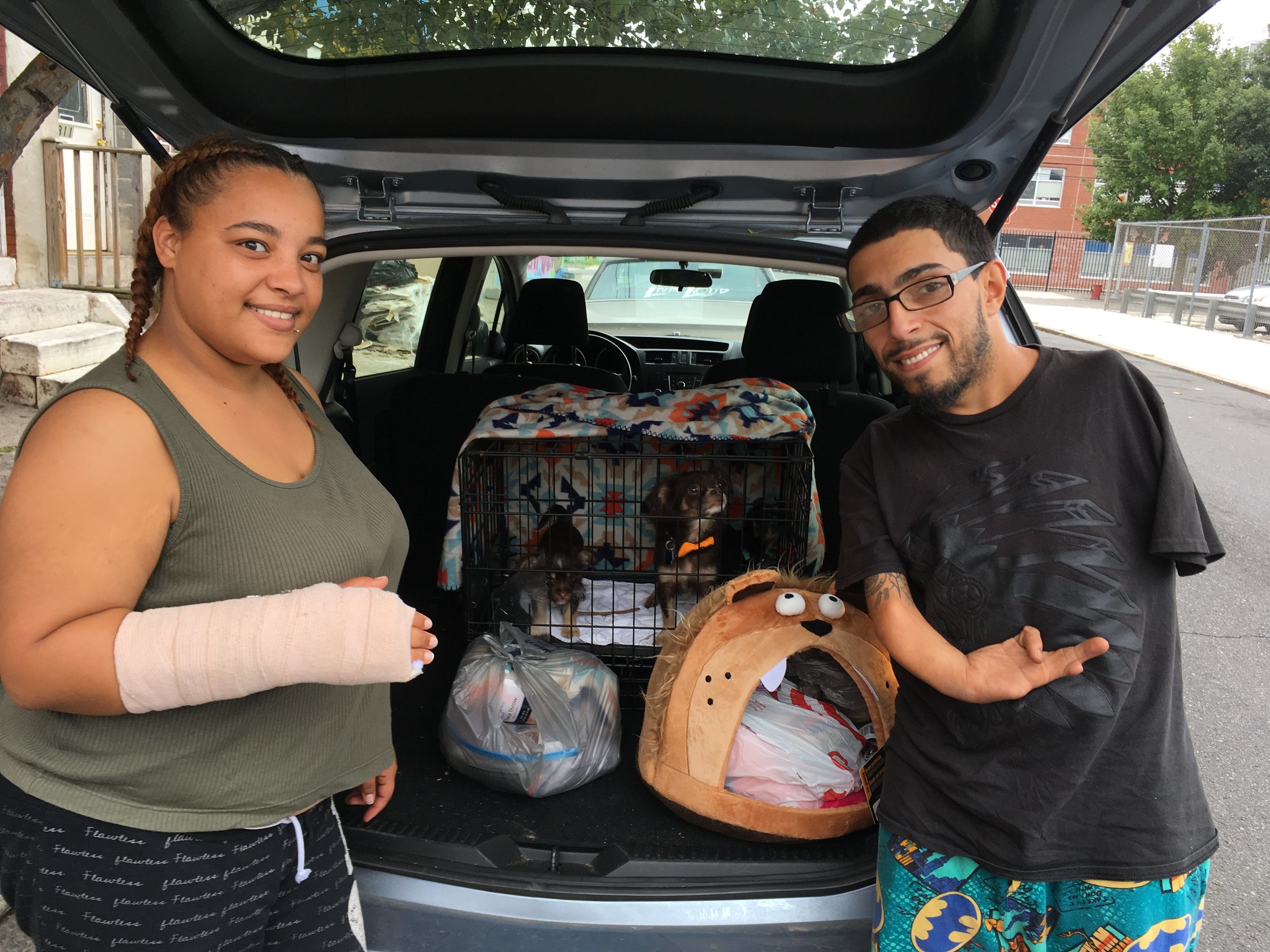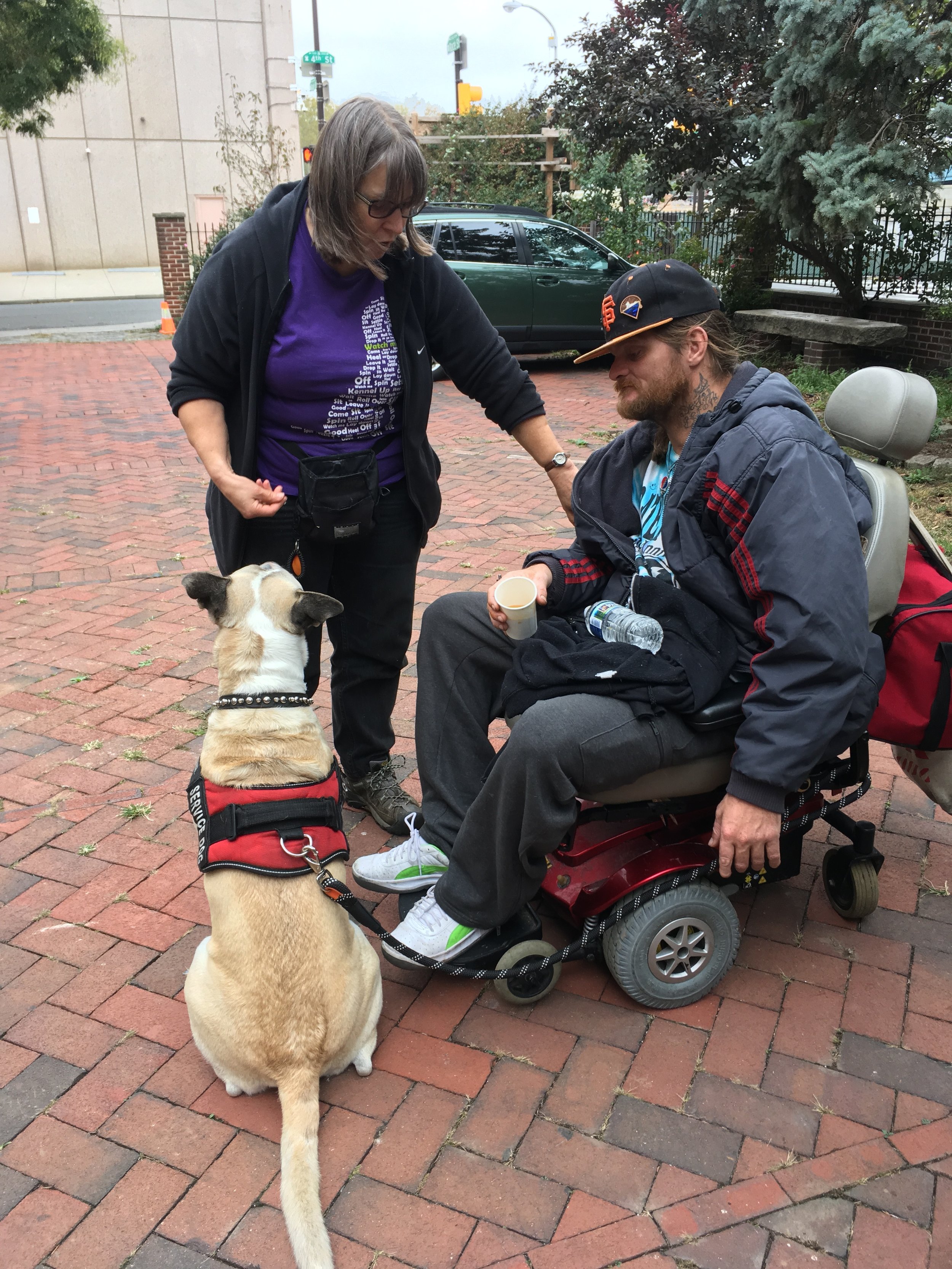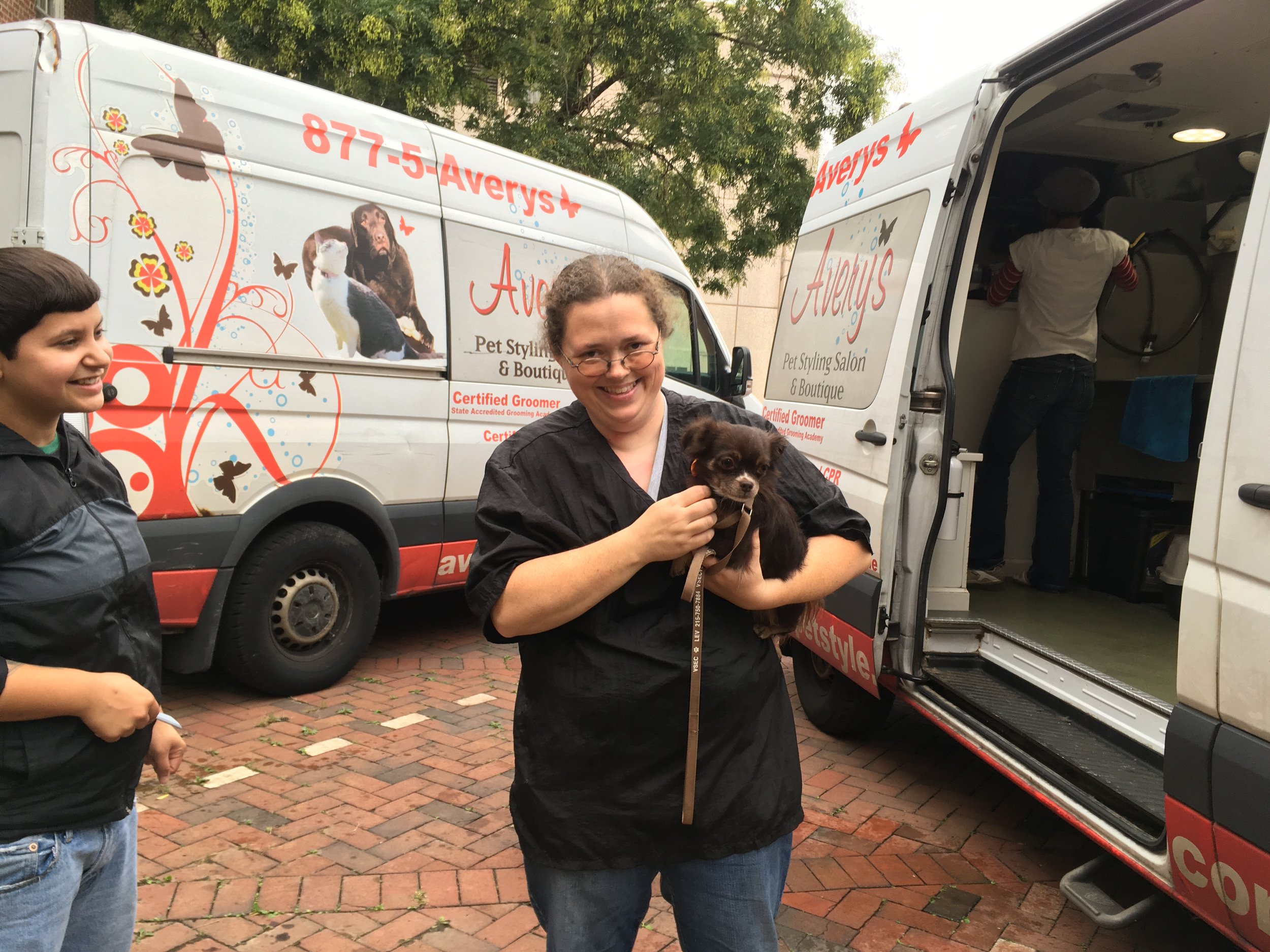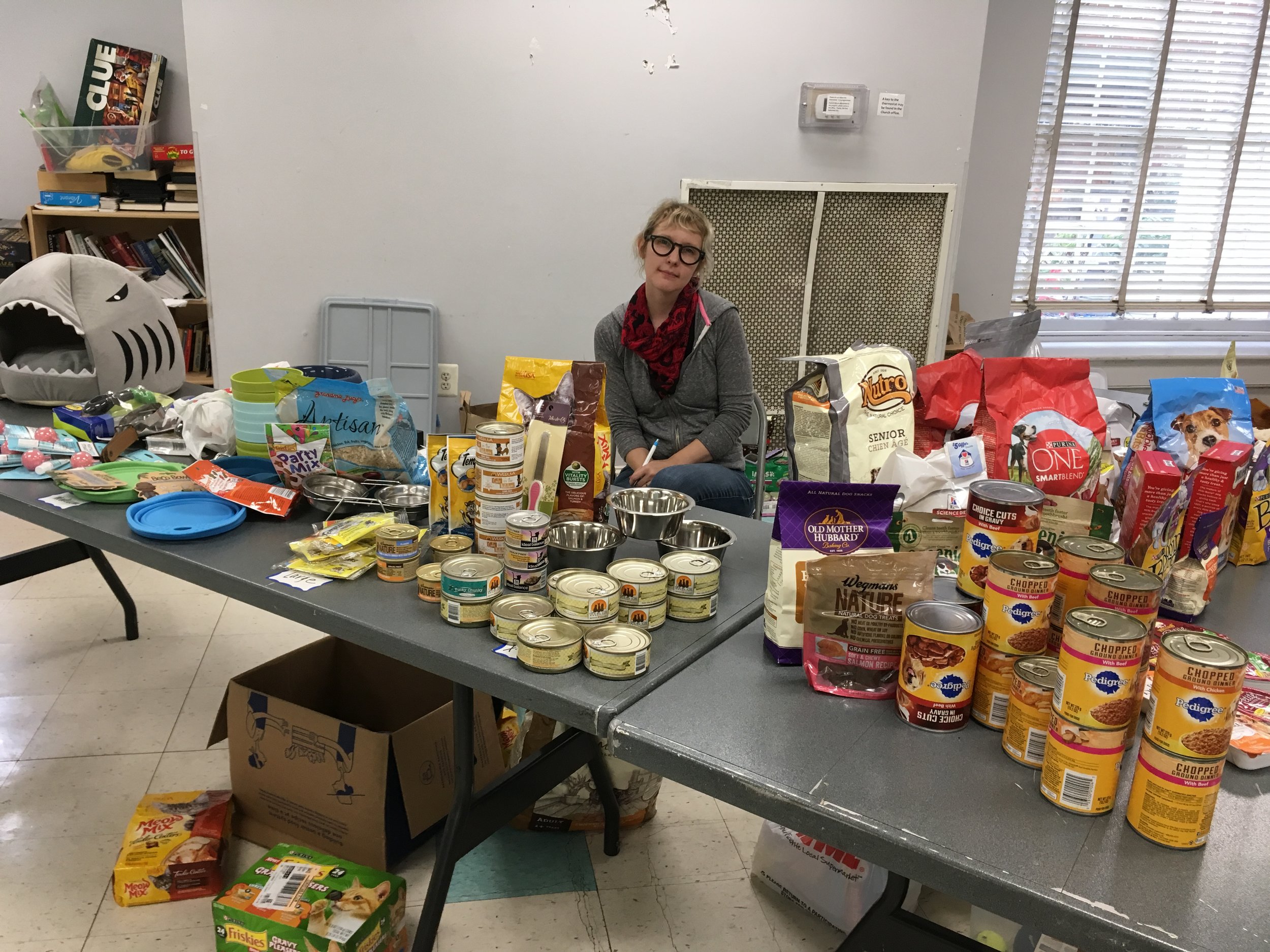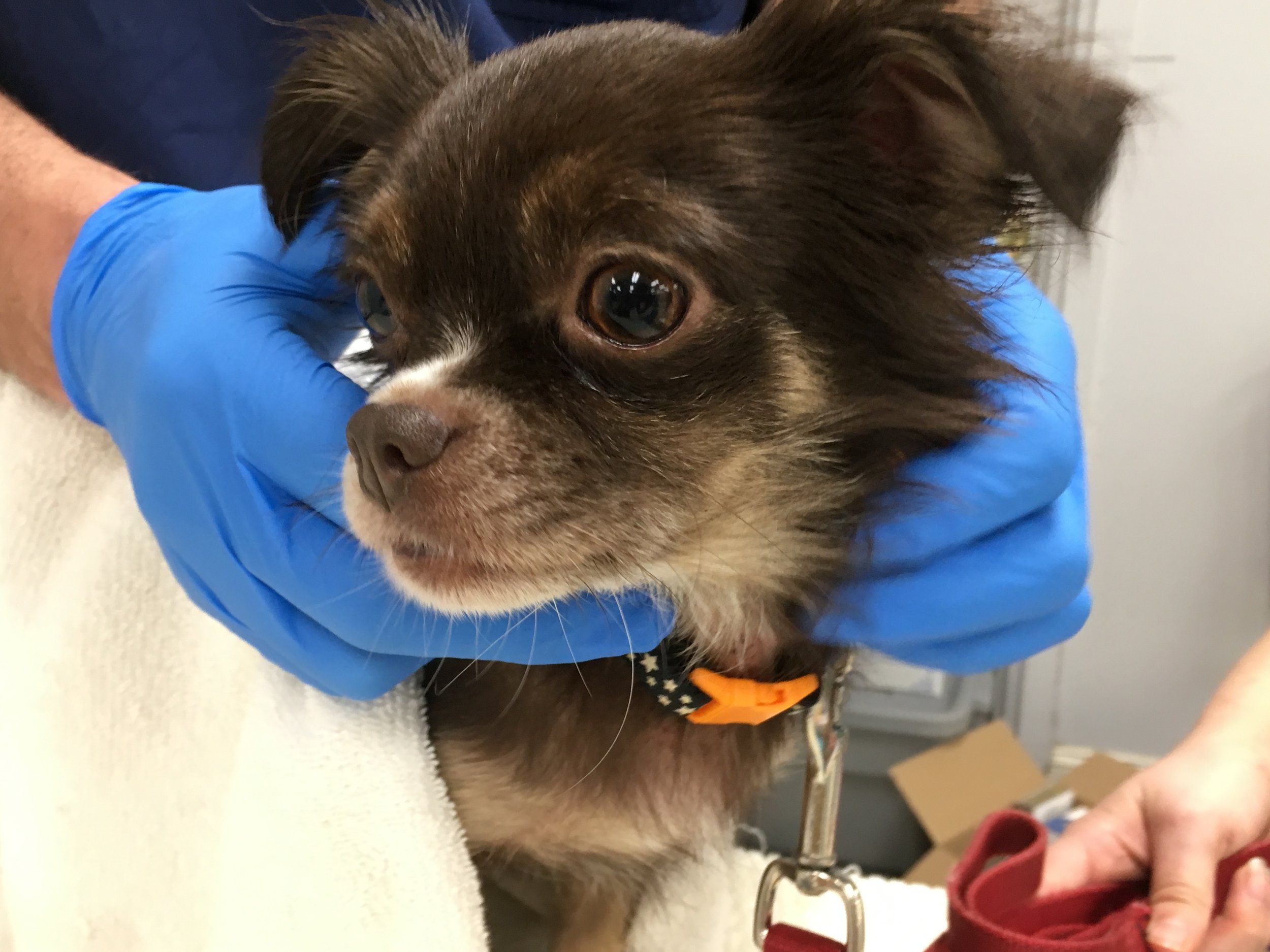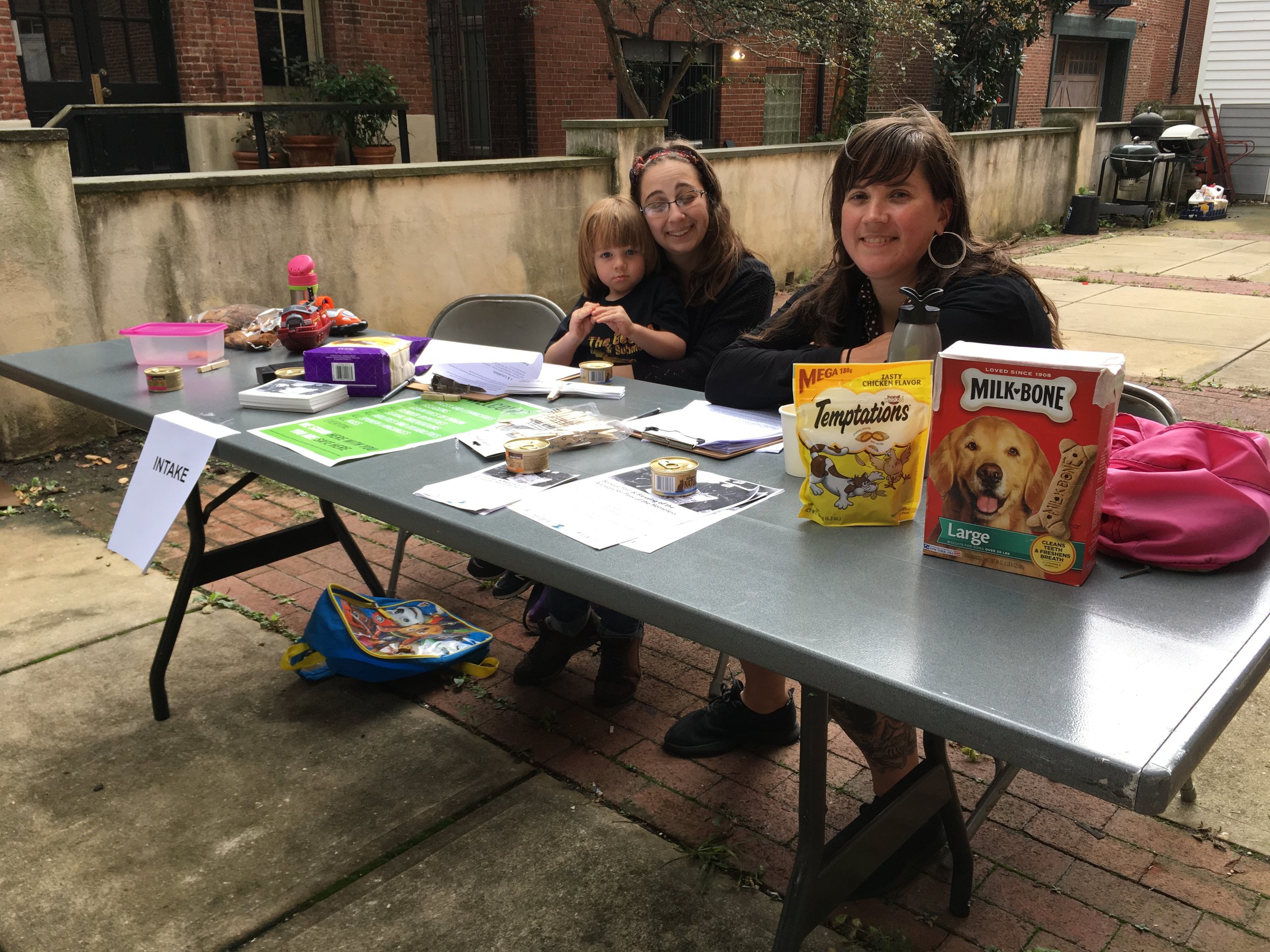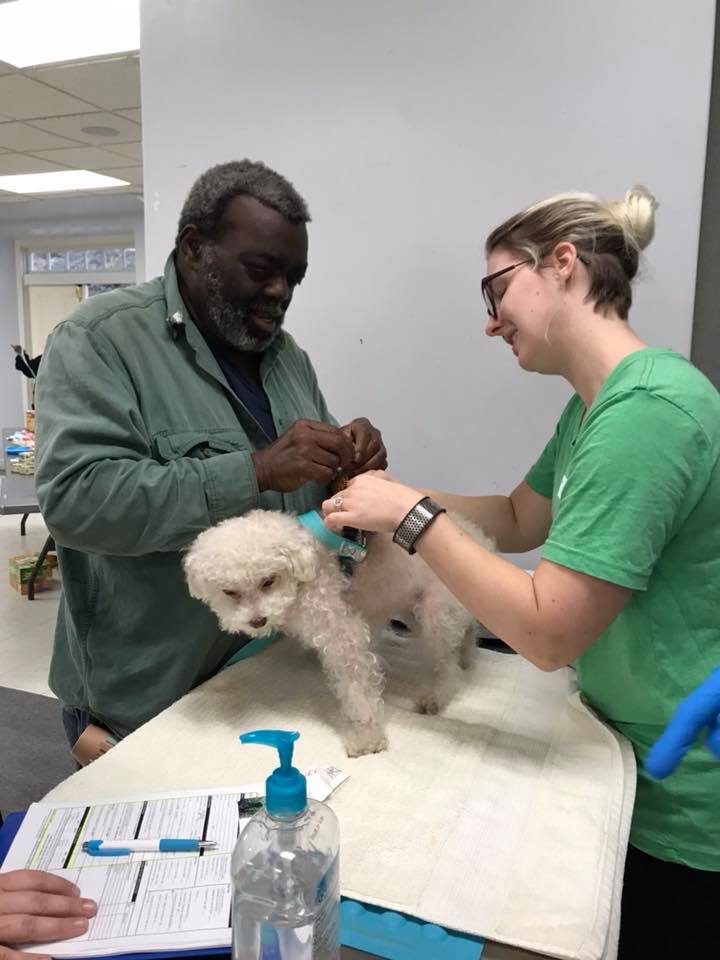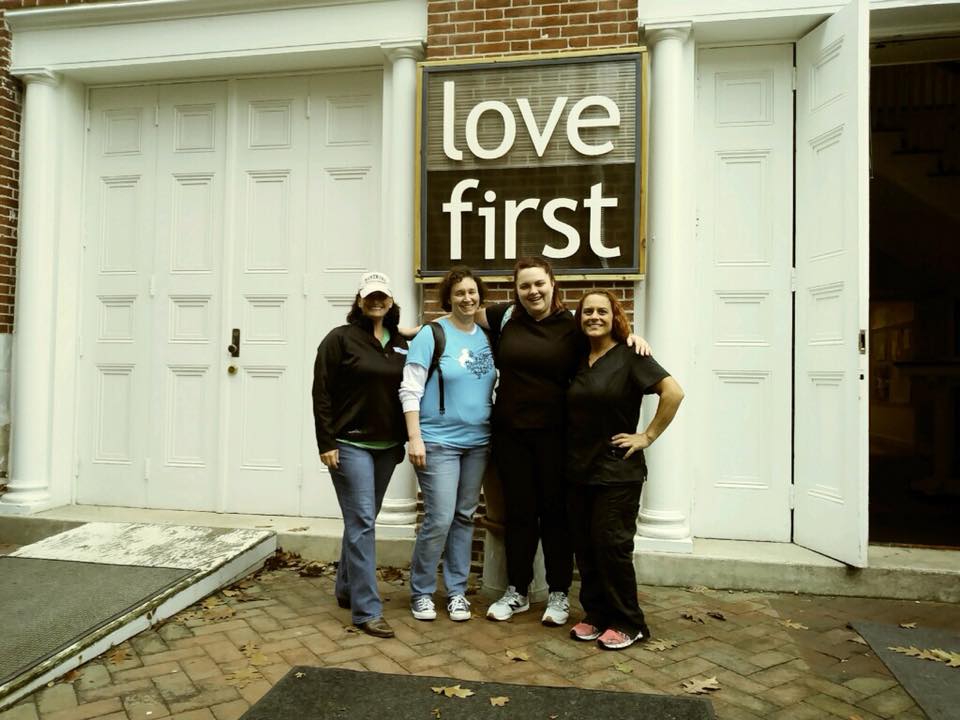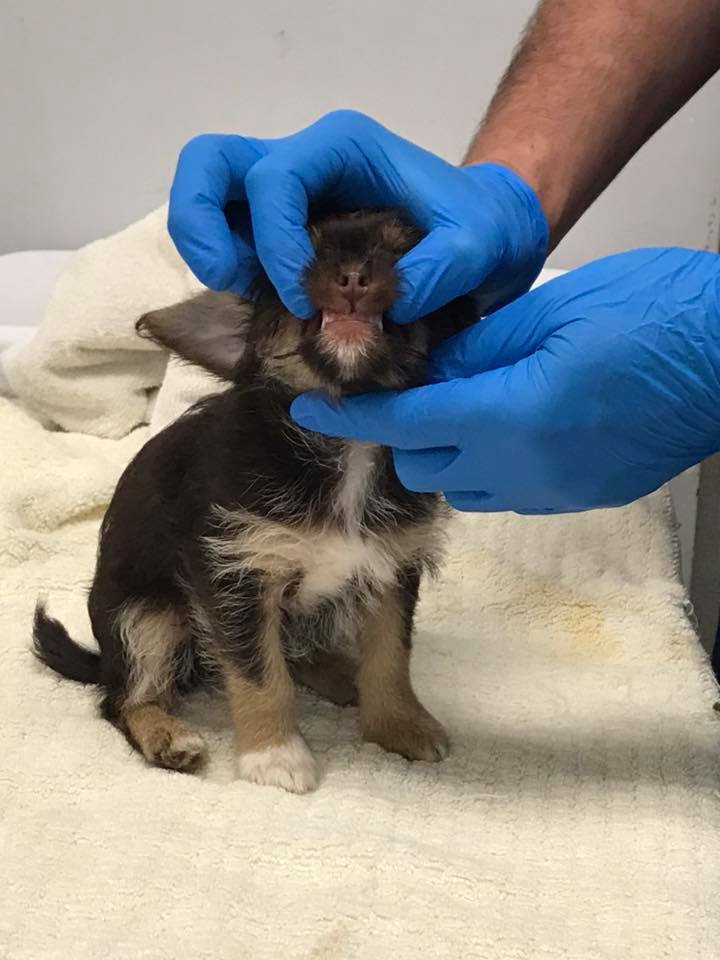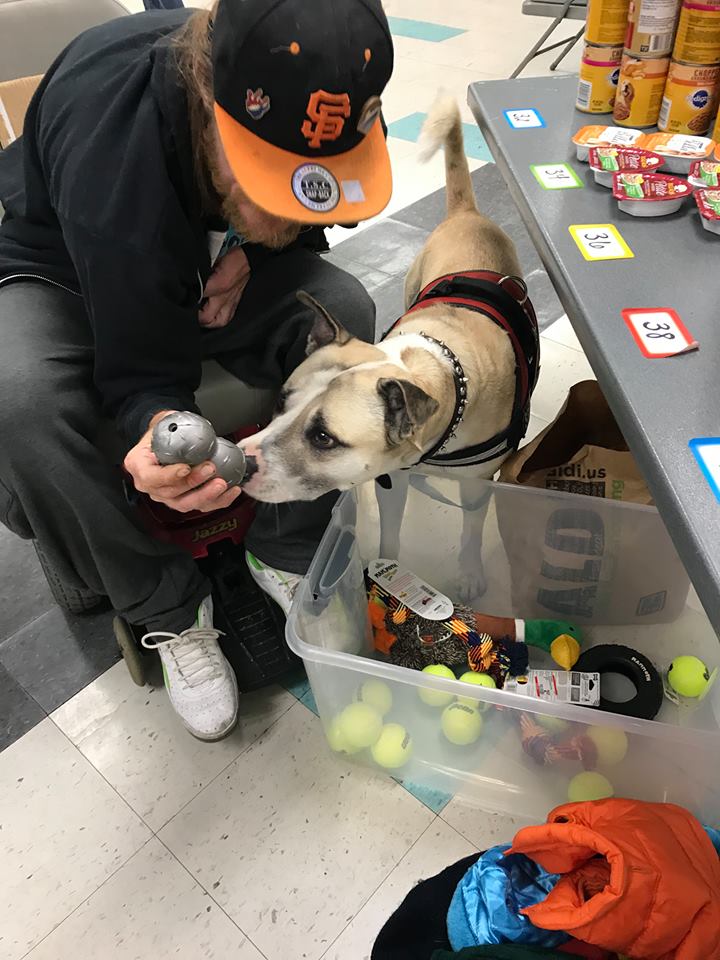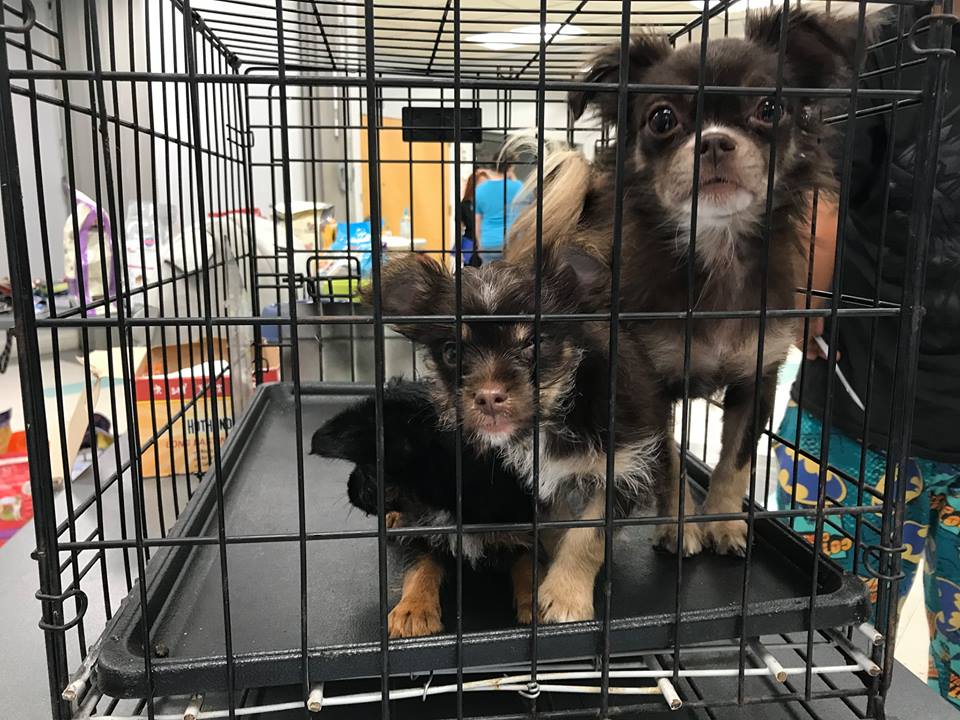
Emotional Support Animal Protocol Evaluation
In the face of the "no pets allowed" rule, some people experiencing homelessness are utilizing the Fair Housing Act's protection of emotional support animals to keep their animals with them while obtaining shelter or housing. People with disabilities are within their rights to have a service or assistance animal at HUD funded shelters. Yet, many homeless service programs have not yet implemented service and assistance animal policies to be in compliance with the law.
As part of an ongoing effort to build understanding of how homeless service agencies can implement effective animal-friendly policies and protocols, My Dog is My Home will be evaluating the emotional support animal protocol of a large permanent supportive housing provider in Los Angeles. The evaluation will entail interviews and focus groups with both staff and clients, as well as a review of property management records.
Preparing Shelter Workers for Animals On-Site
In partnership with the Los Angeles Homeless Services Authority, My Dog is My Home will be providing customized training to five emergency shelter and bridge housing providers who recently expanded to accommodate animals on-site. While the shelter and bridge housing workers have dedicated their careers to working with people, animals are new territory for many of these shelter staff. The customized trainings will cover a range of topics identified through conversations between My Dog is My Home, Bark Avenue Foundation, and the shelter and bridge housing programs' management. Trainings will be held March 26-30.
We thank Bark Avenue Foundation for their generous support of our work in Los Angeles.
NYC Co-Sheltering Legislation
My Dog is My Home is in discussion with the the Office of Council Member Stephen Levin about drafting legislation to keep individuals and families experiencing homelessness united with their animals. In addition to increasing the well-being of families entering shelter, this bill will help reduce avoidable surrenders to municipal animal shelters.
New Data Collection Partnerships in Philadelphia
We are excited to announce our new data collection partnerships with the Veteran's Multi-Service Center and the University City District. These partnerships will help us continue to assess the needs of people experiencing homelessness in Philadelphia and meet our goal of expanding co-sheltering options in the community. Do you work with a homeless service agency that can add 1-2 questions to their existing intake or engagement forms? 1-2 questions is all it takes to help!
Email Christine Kim (christine@mydogismyhome.org) if your organization is interested in becoming a data collection partner.
Sharing Practices with the Office of Homeless Services & Department of Behavioral Health and Intellectual disAbility Services
My Dog is My Home met with directors of the Office of Homeless Services (OHS) and Department of Behavioral Health and Intellectual disAbility Services (DBHIDS) in Philadelphia in February. The meeting came at fortuitous time, in conjunction with the departments' growing awareness for the need to co-shelter people and their animals together. In order to build programs, policies, and protocols that properly address the population's needs, all parties discussed the importance of data and methods for collection.
My Dog is My Home met with directors of the Office of Homeless Services (OHS) and Department of Behavioral Health and Intellectual disAbility Services (DBHIDS) in Philadelphia in February. The meeting came at fortuitous time, in conjunction with the departments' growing awareness for the need to co-shelter people and their animals together. In order to build programs, policies, and protocols that properly address the population's needs, all parties discussed the importance of data and methods for collection.
OHS has recently added the question "Do you have a pet?" to their housing eligibility screening tool within their coordinated entry process. If the respondent answers "yes", they are asked the follow-up question, "If yes, is it a certified service animal, emotional support animal, or neither."
OHS and DBHIDS have also agreed to be among the first members of our Co-Sheltering Collaborative's pilot year. The Co-Sheltering Collaborative's pilot year begins in May 2018 and will exist to build a community of co-sheltering providers who will meet to identify and promote effective practices.
For more information about the Co-Sheltering Collaborative, click here.
Join Our Team! Now Recruiting Volunteer Staff - Social Media Manager & Human Resources / Volunteer Manager
My Dog is My Home is now recruiting for multiple staff positions. Join our 100% volunteer staff and help us grow! Read a little about each position below, or visit our Idealist posting for full descriptions.
My Dog is My Home is now recruiting for multiple staff positions. Join our 100% volunteer staff and help us grow! Read a little about each position below, or visit our Idealist posting for full descriptions.
Social Media Manager -Volunteer Staff job description
The Social Media Manager will work on mass communication initiatives that target national audiences to raise awareness of our cause and work, and will maintain and grow our social networks. This position will work closely with MDIMH’s leadership to craft content and messaging to be shared on all social media platforms. This position will assist MDIMH in the development of brand awareness and online reputation by creating original content, managing online engagement, as well as analyzing key metrics and using them to influence social media strategy and advertising to maximize our audience reach and effectiveness. A successful Social Media Manager will be able to handle our social media presence ensuring high levels of consistent web traffic and supporter engagement.
Human Resources / Volunteer Manager - Volunteer Staff job description
The Human Resources/Volunteer Manager’s main objective will be to help the organization engage and manage volunteers more effectively to work towards our mission. This position would be great for someone who is interested in organizational psychology and development; loves to engage with people; cares about animal welfare, social issues related to people, and the human-animal bond. You must also be willing to be a part of an organization in its early developmental stages. We are a young organization, which means that there is so much potential for you to exercise creativity and build systems that reflect an ideal workplace. Candidates should be interested in a long-term (at least one year) commitment with My Dog is My Home and should be able to contribute 5-10 hours per week.
Co-Sheltering Collaborative: Inspiring Change in Homeless Services
By Dana Teel, MDIMH intern
For communities wishing to provide equitable access to homes to all people and families in need, it is necessary to expand temporary shelter accommodations for the furry, feathered, and scaled friends that may accompany people experiencing homelessness. But how is this accomplished with maximum impact and minimal risk? Surely adding animals to a human shelter environment will be chaotic and even risky. Perhaps. But the reward of keeping people with their animals when they are needed the most is worth facing the challenge. For some, a companion animal might be their sole source of support, comfort, or purpose, and the value of this should not be overlooked.
A shelter resident and his dog inside one of Philadelphia's rare pet-friendly shelters.
By Dana Teel, MDIMH intern
For communities wishing to provide equitable access to homes to all people and families in need, it is necessary to expand temporary shelter accommodations for the furry, feathered, and scaled friends that may accompany people experiencing homelessness. But how is this accomplished with maximum impact and minimal risk? Surely adding animals to a human shelter environment will be chaotic and even risky. Perhaps. But the reward of keeping people with their animals when they are needed the most is worth facing the challenge. For some, a companion animal might be their sole source of support, comfort, or purpose, and the value of this should not be overlooked.
The questions of “how is this accomplished?” still lingers, and it is one that My Dog is My Home (MDIMH) hopes to answer with the help of innovative programs that are currently applying some form of co-sheltering. One such organization in Philadelphia, PA is demonstrating a response to this important need. Now in its third year of offering a small pet-friendly winter respite, this program is hopefully just the beginning of what is to become a common practice across the city and beyond. With programs such as the one in Philadelphia, MDIMH will work towards creating a set of best practices for the field of co-sheltering people and animals together in homeless shelters.
As more communities across the country develop this interest in re-examining what is considered standard, important discussions and meaningful change won’t be far behind. The “Co-Sheltering Collaborative” is being developed by MDIMH to serve as an effective and purposeful professional-level network of homeless service providers and government organizations – enabling them to inspire, inform, and influence each other and programs across the country.
Throughout the course of their membership, organizations will be actively involved in receiving as well as contributing to the Collaborative’s resources and communications. By sharing practices and engaging in discussion, members also contribute to the evolution of existing co-sheltering programs. Members are expected to conduct thorough needs assessments, proper and judicious implementation, and ongoing evaluation in order to add to evidence of their programs’ strengths and weaknesses.
Navigating these processes can be very complex, and great benefit can be had from membership in the Co-Sheltering Collaborative in the form of feedback and guidance tailored to meet individual programs’ needs. The wealth of information gathered through the growth and evaluation of these individual programs will be invaluable for developing standardized co-sheltering best practice, as well as for generating opportunities and avenues for research endeavors for this generally underrepresented subject in academic literature.
Sacramento's pet-friendly winter shelter is a success, with some complications to learn from
Sacramento's first low-barrier winter shelter (one that accepts the "3 P's" - partners, pets, and possessions) is proving to be quite successful at getting people out of the streets and encampments in the winter. However, that does not mean they did not experience their fair share of challenges.
“It’s not perfect, but it’s working,” Jaycob Bytel, spokesperson for Mayor Darrell Steinberg, said of the city’s approach to sheltering homeless people this winter. “Allowing pets to stay with their owners has been a critical part of getting chronically homeless people to come in, which is exactly what we had hoped to do.”
Joey Mandel’s dog Austin Puppers is among the 100 dogs and eight cats that have come out of the cold with their owners since the city’s winter triage homeless shelter opened in early December. Hector Amezcua hamezcua@sacbee.com
Sacramento's first low-barrier winter shelter (one that accepts the "3 P's" - partners, pets, and possessions) is proving to be quite successful at getting people out of the streets and encampments in the winter. However, that does not mean they did not experience their fair share of challenges.
“It’s not perfect, but it’s working,” Jaycob Bytel, spokesperson for Mayor Darrell Steinberg, said of the city’s approach to sheltering homeless people this winter. “Allowing pets to stay with their owners has been a critical part of getting chronically homeless people to come in, which is exactly what we had hoped to do.”
By opening their doors to people and their animals in December, the Volunteers of America operated shelter has welcomed more than 100 dogs and eight cats. With this staggering number of human-animal families served in such a short period of time, it is clear that the shelter is filling a huge void in social services and need within the homeless community.
Part of the model's success is not only allowing animals, but allowing people to sleep with their animals. Up until recently, the more conventional approach to co-sheltering was kenneling animals in a separate space to reduce risk of incidence. Initially, VOA staffers planned to follow this model. “But we quickly realized that wasn’t going to work,” said the agency’s Christie Holderegger. “These animals are support and comfort for our guests. They wanted to be with their pets.”
Bringing animals into a shelter space, however, does create a more complex environment. According to records, two dog bites occurred at the shelter and a third happened off site. All the bites were to people.
When interviewed about these incidents, Jace Huggins - chief animal control officer for the city - does not consider the number of bites involving the winter shelter’s canine residents to be excessive. The three incidents, he said, account for a small percentage of all dog bites investigated by his agency since the shelter opened.
“Some of these dogs were being raised in very tumultuous environments,” outdoors at homeless encampments, said a city animal shelter manager Gina Knepp. “They are very protective of their owners, some of whom are struggling with mental health issues, substance abuse and other problems. Given all of those things, I’m surprised that it has gone so well and we haven’t seen more chaos.”
Dog bites and other animal behavior issues are a risk the shelter took when they opened, but overall they find the risk and its consequences worth the outcome - which is a vastly reduced street homeless population in the winter.
The shelter was scheduled to only stay open until March 31st, but officials are discussing keeping it open beyond that date.
NYC HOPE and Shadow Count 2018
Every year, My Dog is My Home team members participate in the NYC HOPE Count and Shadow Count. The Shadow and HOPE Counts are occurring simultaneously, so read about each one and choose the operation you'd like to join us in this year!
Every year, My Dog is My Home team members participate in the NYC HOPE Count and Shadow Count. The Shadow and HOPE Counts are occurring simultaneously, so read about each one and choose the operation you'd like to join us in this year!
HOPE Count:
On Monday, January 22nd, 2018, Department of Homeless Services will conduct its annual Homeless Outreach Population Estimate (HOPE), a citywide community volunteer effort to count every New Yorker sleeping on the street across the five boroughs during the coldest time of the year. HOPE relies on thousands of volunteers, and we are asking you to sign up to make this large-scale canvass a reality!
http://www1.nyc.gov/site/dhs/outreach/hope.page
Shadow Count:
On that same night, paid “decoys” will be planted in designated locations throughout the city. Information on the number of decoys that are counted by DHS volunteers will be used to assess the accuracy of the official DHS HOPE Count 2018. Shadow Count is funded by DHS but conducted independently by Silberman School of Social Work at Hunter College.
http://sssw.hunter.cuny.edu/shadowcount2018/
Volunteer for Your Community PIT Count
Want to contribute to change for people experiencing homelessness? Volunteer for your local point-in-time (PIT) count to help estimate how many people are experiencing homelessness in your community. All PIT counts occur within the last ten days of January.
Want to contribute to change for people experiencing homelessness? Volunteer for your local point-in-time (PIT) count to help estimate how many people are experiencing homelessness in your community. All PIT counts occur within the last ten days of January.
Although most communities' PIT count surveys do not include questions about animal companionship, many surveys do have a space for more descriptive comments or other notes. As a volunteer, if you come across a person experiencing homelessness with an animal, write it into the notes and put it on the radar of your local homeless service agency!
Below, we have included the information for communities conducting the PIT count in previous or current My Dog is My Home project locations, as well as Indianapolis - the first city to include "pet owner" as a subpopulation on their survey. Each city that includes animals on their PIT count survey is noted with a *. If your community is not listed below, look up the local agency which oversees homeless services in your city.
Meeting with NYC Mayor Bill de Blasio at the Queens District 30 Town Hall
Social Work / Community Organizing intern Tiffany Noboa meets with the mayor to discuss the lack of co-sheltering options for people experieincing homelessness with animals in NYC.
My Dog is My Home brought the issue of co-sheltering to the attention of politicians and bureaucrats at the December town hall meeting for Queens District 30. What became abundantly clear to us was that co-sheltering was not a topic often (or perhaps ever!) thought of by our elected officials within the realm of homeless services. Help us bring it up often by joining us at future town hall meetings. Email community organizing intern Tiffany Noboato get involved.
A Year in Review
2017 was a tremendous year for My Dog is My Home. Scroll through our gallery to revisit just a few of our favorite moments from last year.
From top to bottom, left to right: Toledo Service Fair (photo credit: Toledo Blade), Bloomington exhibition and presentation on service fair data, Asheville pop-up exhibition and presentation at Firestorm Books & Coffee, Bloomington Service Fair #2, Toledo Social Work continuing education event with special guest Diann Wears (photo credit: Toledo Blade), Video: Advocacy Research Symposium at College of Mount Saint Vincent, Philadelphia Service Fair and Blessing of the Animals, annual meeting at Woodstock Farm Sanctuary, starting line at the 1st Annual Tofurky Trot to benefit My Dog is My Home, LAHSA/My Dog is My Home webinar for new co-shelter providers in Los Angeles, founder Christine Kim speaks with mayor Bill de Blasio about co-sheltering options in NYC at a town hall meeting.
Thanks for Joining Us at Vegan Drinks BK!
Thank you to U.S. Veg Corp and NYC Vegetarian Food Festival for inviting us to last night's #VeganDrinksBK as a nonprofit partner. We also thank everyone who stopped by our table to chat! We had a great time connecting with fellow animal lovers at Reclamation to talk about the power of the human-animal bond in circumstances of homelessness. Stay in touch! Sign up for our newsletter!
Join us at Vegan Drinks Brooklyn featuring Chef Rootsie
My Dog is My Home is thrilled to be the nonprofit partner for this month's Vegan Drinks Brooklyn at Reclamation Bar. Enjoy a cocktail and come meet us in person!
Facebook event page
Food vendor for the night: Veggie Grub
Date & Time: Thursday, January 11 - 8pm to 10pm
Location: Reclamation Bar (817 Metropolitan Avenue, Brooklyn, NY 11211)
Vegan Drinks Brooklyn follows the national Vegan Drinks model of being a free monthly social networking event for people interested in promoting veganism and advocating for animal rights.
On all social media platforms, use #VeganDrinksBK when you post a photo of you and your new veg-friends at the event!
The event is free to attend.
My Dog is My Home is Now a Beneficiary of Rescue Chocolate!
Right in time for the holidays, we are now a beneficiary of Rescue Chocolate (completely vegan)! Rescue Chocolate is “the sweetest way to save a life!” From each chocolate purchased, 100% of the net profits are donated to animal rescue organizations around the country.
Supporters may now order Rescue Chocolate online and type "My Dog is My Home" into the Gift Note field on the cart before checkout. Rescue Chocolate gives us $1 on every item ordered (excluding mini bars). So make sure you put in an order this holiday - these bars make excellent stocking stuffers!
The Prevalence of Cats Among Philadelphia's Homeless Population
Cats of a My Dog First client.
Since our October service fair in Philadelphia, Misfit Manor's "My Dog First" program, which provides veterinary care and supplies to companion animals of people experiencing homelessness, has seen a surge in clients. Surprisingly, many of these clients have been cats!
Our experiences in other cities led us to believe that people experiencing homelessness are much more likely to have dogs than any other kind of animal. During our service fairs across the county, the vast majority of attendees brought dogs, including in Philadelphia. However, the sample size in Philadelphia was small and made it difficult to draw any demographic conclusions.
After the Philadelphia service fair, the My Dog First program was widely promoted and brought many new clients to Misfit Manor's doors - specifically, four single men experiencing homelessness with cats, and a woman with three cats. Moreover, during outreach for the service fair, My Dog is My Home founder Christine Kim received a tip from a community member who stated that he often sees people he believes to be homeless with cats riding the trains in the Northeast section of the city.
We have yet to understand how this surprising trend will impact Misfit Manor's services or our approach to developing co-sheltering options in Philadelphia. Do you have ideas about how we should engage this population differently? What special challenges are there to experiencing homelessness with a cat, as opposed to a dog? Send your responses to My Dog is My Home founder, Christine Kim (christine@mydogismyhome.org), to be featured in our next newsletter.
News Brief: Rising Rents, Rising Homelessness - 2017 Annual Homeless Assessment Report Finds Increase in Homelessness Concentrated in High-Cost Cities
For the first time in seven years, homelessness has increased in the United States. According to the 2017 Annual Homeless Assessment Report (AHAR) to Congress, the increase was driven mostly by the numbers of unsheltered individuals in the 50 largest cities.
“The commonality in [these places] are rapidly rising rents, with not rapidly rising incomes. This is causing the displacement of a significant number of people,” said Housing and Urban Development (HUD) Secretary Ben Carson during a press call on Wednesday. Matthew Doherty, executive director of the U.S. Interagency Council on Homelessness, agreed. “High cost and low vacancy rates are putting more people at risk of entering homelessness, and they’re making it harder and harder for people to find housing as they strive to exit homelessness.”
The Trump administration's proposed budget for 2018 slashes HUD spending by more than $6 billion, eliminating housing aid for millions, including rental housing vouchers for more than 250,000 households. As Kriston Capps reported, “relative to funding levels necessary for HUD in fiscal year 2017, the cuts amount to a 15 percent reduction—the largest cuts in housing aid since the Reagan administration.”
According to Gary Blasi, a professor of law emeritus at UCLA and an expert in homelessness, there is still hope for people experiencing homelessness. One of the nation's homeless capitols is making an effort to effectively prevent and end this crisis.
"Well, [Los Angeles is] doing a few things right. One is that the voters have done everything they could do. They passed by 75 percent a bond that will raise about $1.2 billion over 10 years to build supportive housing. The county voters have approved a sales tax increase that will add about 350 million a year for various kinds of services...[but] we know exactly what we need to do in order to end homelessness in Los Angeles. It's a question primarily of political will and leadership and a recognition that we have underspent on this part of our society for a very long time and it will take some considerable resources to get back to where we even were 30 years ago."
Click the images below to scroll through a few key findings from the 2017 AHAR:
My Dog is My Home's Annual Meeting at Woodstock Farm Sanctuary
My Dog is My Home celebrated its past year of operations and accomplishments during a bi-coastal annual meeting. The New York team took the opportunity to retreat to the beautiful Woodstock Farm Sanctuary (WFS) to reflect on its work and the human-animal bond.
WFS's mission is to rescue farmed animals and give them care and sanctuary, connect animals with people to advance veganism, and advocate for animal rights in alliance with other social justice movements. At first glance, My Dog is My Home’s mission may seem afield from WFS’s. But our two organizations actually share a foundational quality - WFS works to provide sanctuary for animals and to give them a new lease on life, as do we. In our work, home is a sanctuary for both human and non-human animals alike, as well as those who come in human-animal pairs.. Also, we believe that all social justice missions are connected. The struggle for a more kind, compassionate, and just world includes the intersecting interests of both people and animals.
We thank our host for providing the perfect setting for a review of our year!
Recap: Philadelphia Service Fair and Blessing of the Animals
"They're a part of my family. They go where I go."
- Mohammed
We thank our generous and dedicated partners in the City of Brotherly Love for their participation in the Philadelphia Service Fair and Blessing of the Animals. With Misfit Manor, West Chester University, Emancipet, Bad Dog Good Dog, Avery's Pet Styling Salon and Boutique, and Old First Church, we were able to serve 7 animals and their human caretakers and prepare them for the winter ahead. The dogs walked away fully vaccinated, bathed, and stocked up on cold-weather sweaters. Unfortunately, we know that their human caregivers face more difficult challenges that we cannot address in a 1-day service fair. So for us, the service fair is not an end in itself - it is just the first step in addressing the shelter and housing needs of people experiencing homelessness with animals.
Through the relationships forged with local partners and our new and improved understanding of human service providers in Philadelphia, we hope to identify and work with one of the area's overnight winter shelters for a "soft launch" of a pet-friendly space. Please check our Philadelphia project page for future updates.
Photo credits: My Dog is My Home, Jaime Morgan (Misfit Manor), and Emancipet Philadelphia.
Recap: Homelessness and Animal Companionship in Toledo and Nationally
Photo Credit: Jetta Fraser for The Toledo Blade
Diann Wears, the face of homelessness and animal companionship in Toledo, attended My Dog is My Home's social work continuing education event "Homelessness and Animal Companionship in Toledo and Nationally" to show her support of our efforts. It has been a little over one year since Diann and her dog Cow were taken off the streets and housed together, with much support and involvement from the local community. Diann noted that her case was particularly visible because she didn't hide, and she slept right downtown near the Greyhound Bus station. Others may not be as visible.
As showcased by the data collected by My Dog is My Home and the University of Toledo during the February 2017 service fair for companion animals of the homeless, people and families who are experiencing homelessness with animals may be doubled up or couch surfing rather than street homeless. They may also be an invisible population to local social service providers because of a "foreclosure mindset" - homeless human-animal families rightly assume that they will be denied access to services because of their animal, so they avoid engaging homeless services altogether.
Other data collected from the service fair was also reviewed at the continuing education event, in addition to different trends and service models from around the country.
